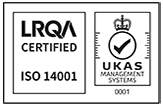If you’re in the process of planning for a skip to be delivered to your home or business, then there are a few things to take into account when it comes to safe skip hire.
A skip is made from heavy reinforced steel, so, whatever the size of skip you require, you can be sure that, even before you’ve started loading it, it’s going to weigh a lot. For this reason, it’s important to think about where your skip will be situated.
Make sure the area where you are having your skip placed is capable of taking the weight of a full skip and consider the people who will be nearby, to ensure they are aware of skip hire safety and can avoid potential injury.
PREPARING FOR THE ARRIVAL OF YOUR SKIP
The ideal surface for safe skip hire is a flat, stable, solid surface that’s clear of obstructions.There should be adequate space around it, to ensure it can be moved into place correctly and also to be certain that the items which are going into the skip can be put in there safely.
Anyone who is hiring a skip must never attempt to move it, once it is in place, so be sure that you’ve had a good think about where it is going to go. During skip hire delivery, also make sure pets and children are away from the area, again, to avoid injury.
If a solid driveway or other similar space is not available, a skip may be able to go in your garden, if there’s sufficient space and the ground is able to take the weight of it – remember to check that this is the case before the skip arrives.
Another option is to apply for a permit for the skip to go on the road outside your home. If you live on a public road, getting a permit will be a requirement of the local council which will outline how long the skip can stay there and any skip hire safety rules that must be followed, such as the placement of reflective markings or traffic cones.
Remember, it’s always important to check that there’s enough room for your skip hire, before it’s delivered.
LOADING A SKIP SAFELY?
There are several skip hire safety tips to follow, once your skip is in place. Always remember the following:
A skip should only ever have a level load or less – never overfill it, because it creates the risk of objects falling and causing injury. Only fill a skip to the height of its sides. If you pile waste over this level, it becomes unsafe and is illegal to take on the road.
Skips come in several different sizes. To avoid the inconvenience of having to order another skip, because you’ve overfilled the first one, give proper consideration to how much waste you actually have, before you choose your size of skip hire.
Try to ensure that larger and heavier items are evenly spread at the bottom of the skip, with lighter items at the top.
In addition to checking if there is adequate space for you to load the skip, make sure to get help when lifting heavy items into the skip to avoid injury.
WHAT CAN’T GO IN A SKIP?
There are a number of hazardous materials that can’t go in your skip as they can be damaging to people and the environment.
These include certain appliances, electricals, solvents, fuels and batteries. Check what is and isn’t allowed in a skip as some items, such as plasterboard, must be disposed of in a different way.
For more information about Rabbit skip hire, contact us on 01903 762020, email info@rabbitgroup.co.uk or fill out our online skip hire contact form.





